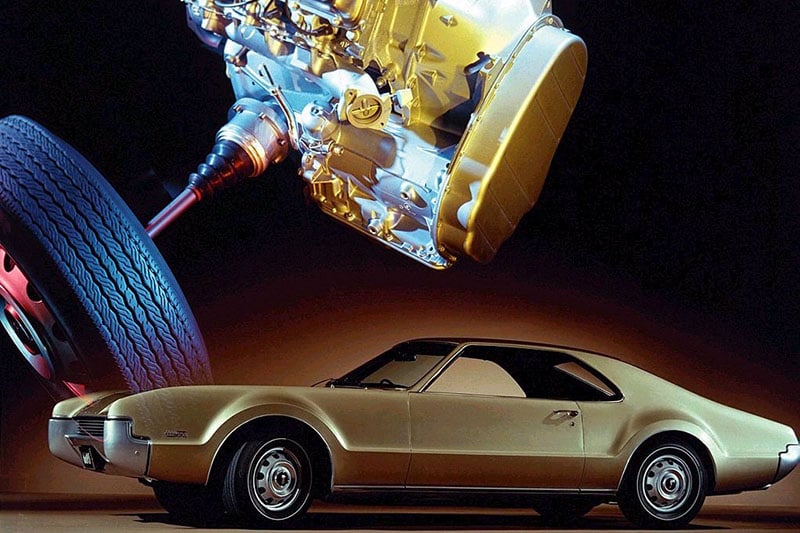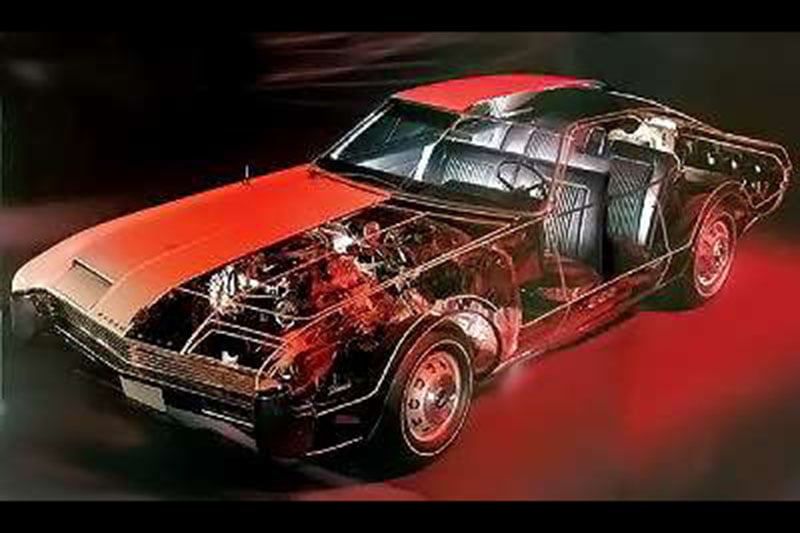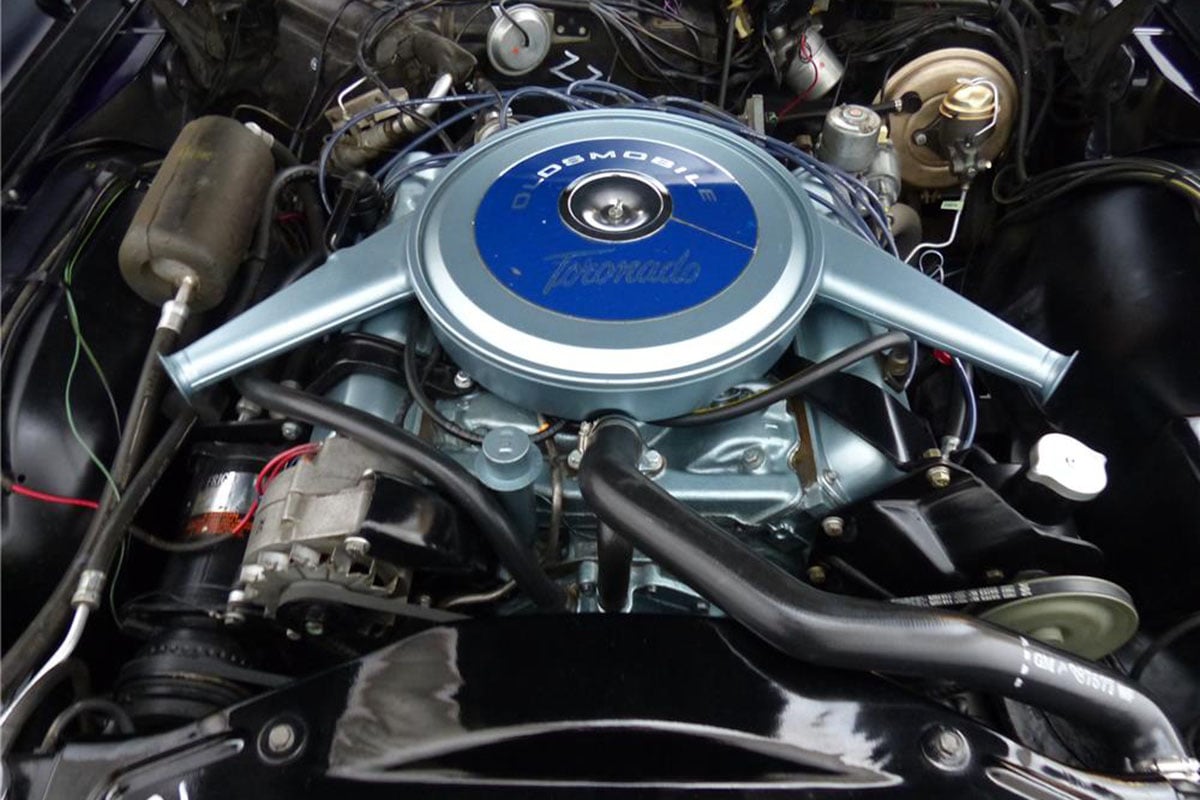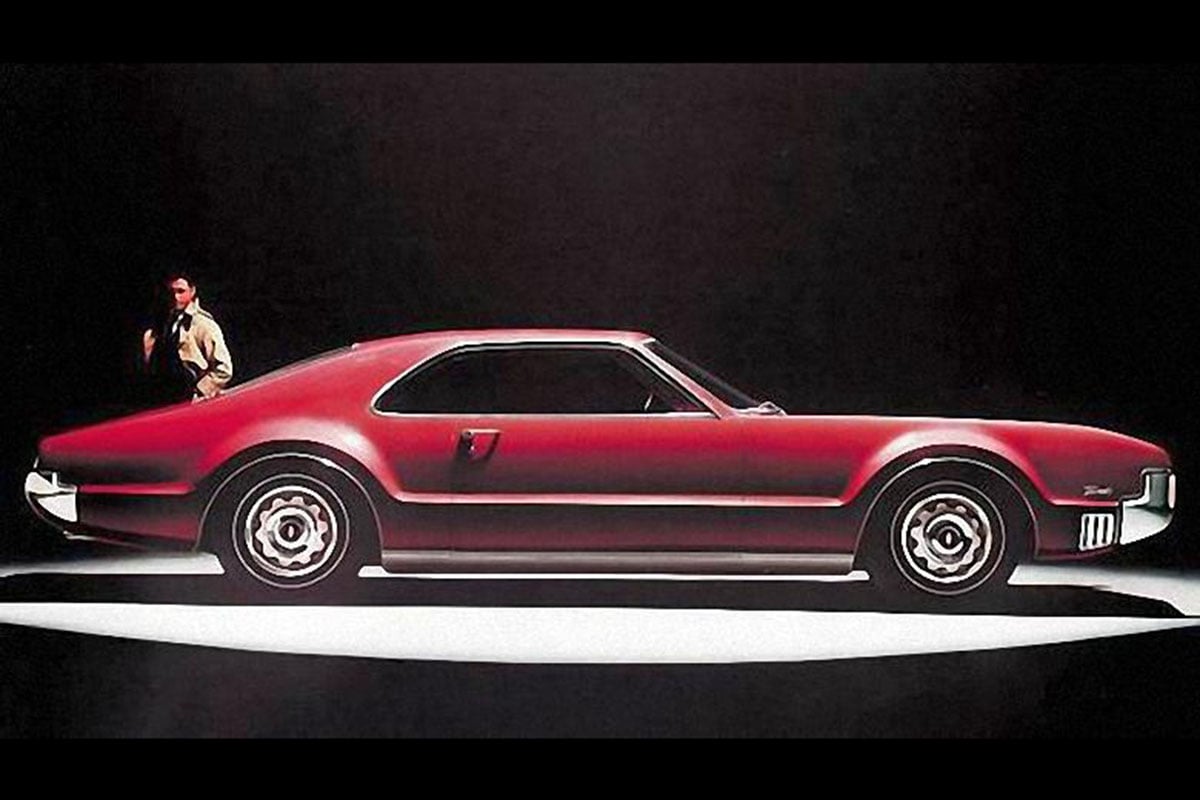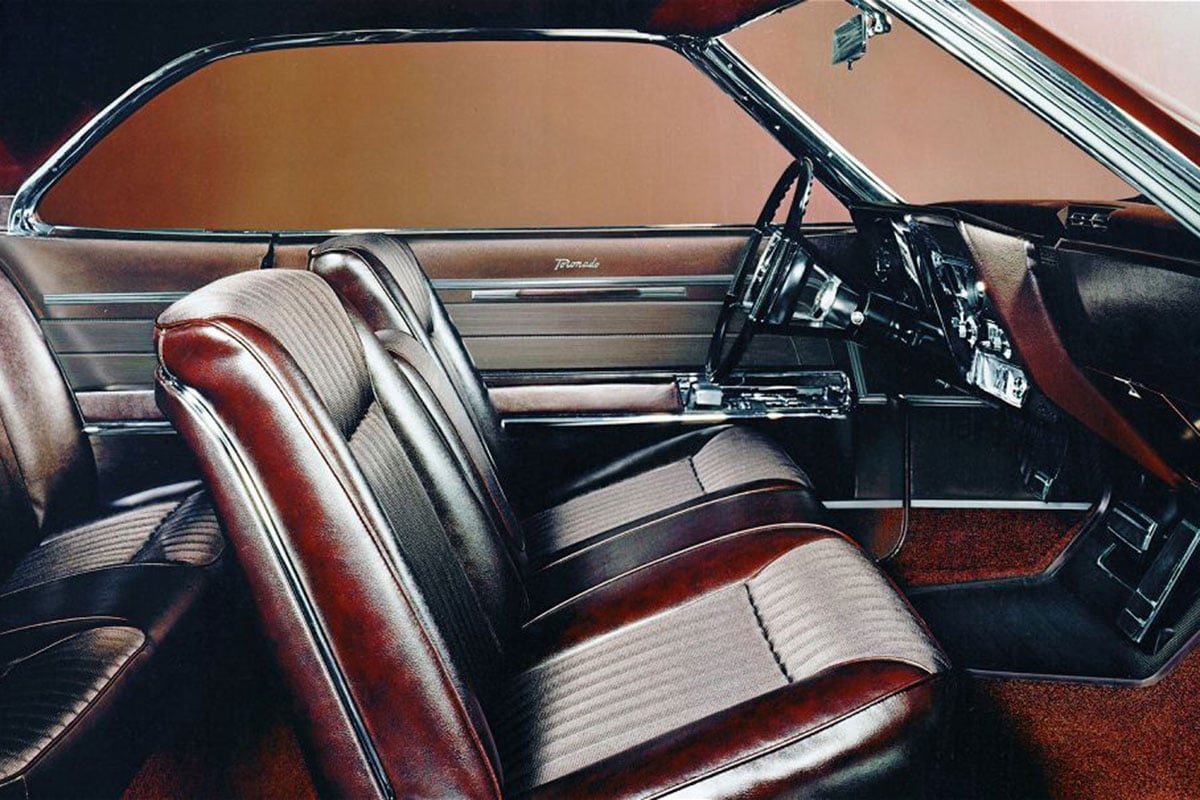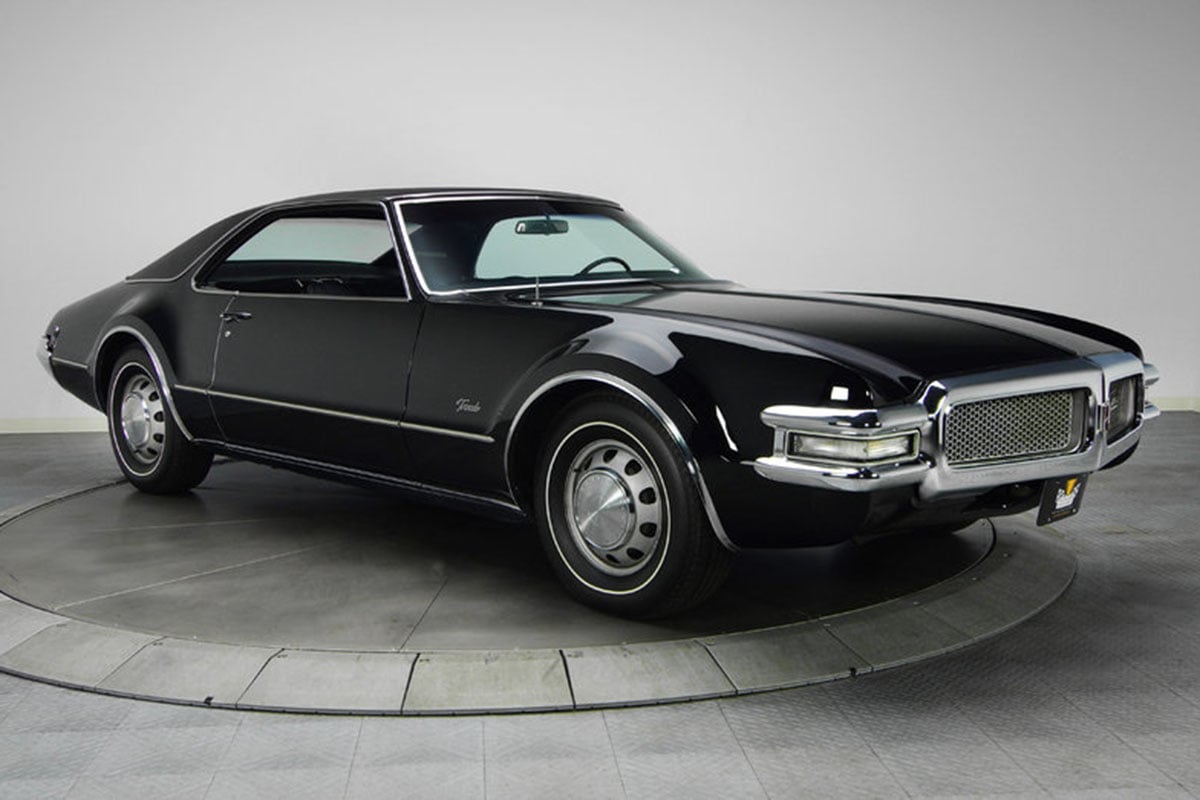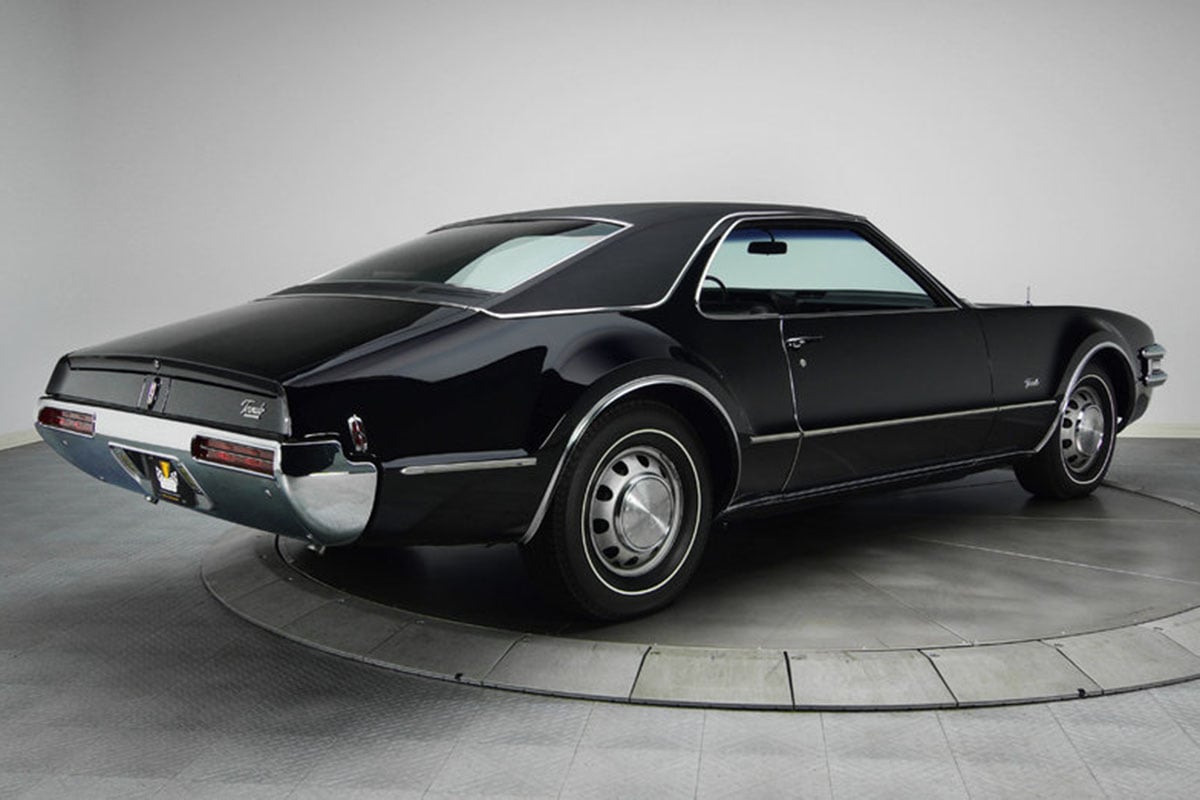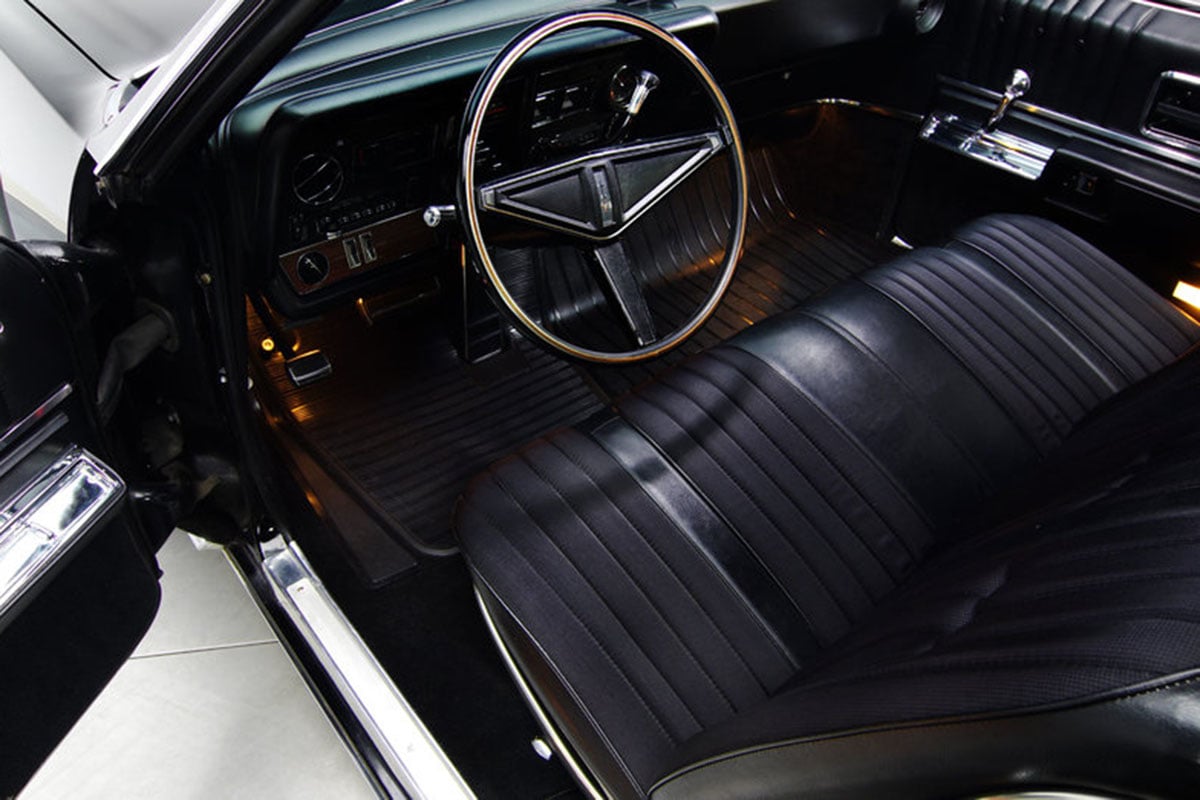The basic play book for muscle cars – and domestic high performance in general – was fairly well established by the latter part of the 1960s. A burly V8 under the hood was essential, while head-turning styling on a coupe body was also more-or-less obligatory. And although brake-standing burnouts that would incinerate the rear tires in short order seem like an intrinsic element of that equation as well, in 1968 Oldmsobile made it clear that the brand wasn’t willing to be constrained by such standards.
During that era, GM was perhaps the most adventurous automaker among the Big Three in terms of engineering, as evidenced not only by prototype projects like the jet-powered Firebird cars and the rear-engine layout of the Corvair, but by the OIdsmobile Toronado as well.
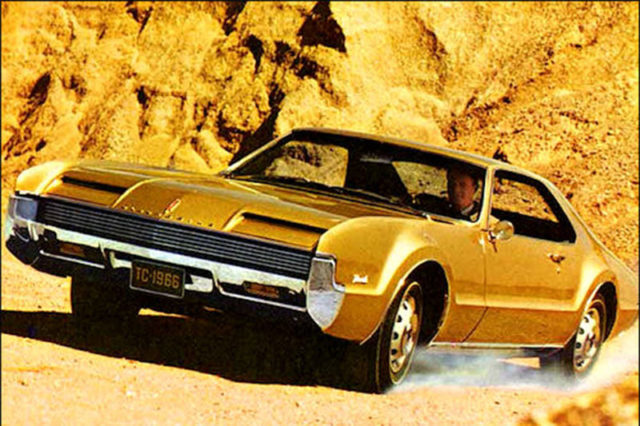
The Oldsmobile Toronado stood out not only because of its aesthetic design, but also because of its unique front-drive layout, a design which had taken seven years and over 1.5 million test miles to develop.
The original Toronado featured the kind of big-cube V8 and eye-catching coupe style that helped usher in the muscle car era, but its approach and overall mission deviated substantially from the typical high-performance design strategy, not only due to its emphasis on luxury, but because of its unusual drivetrain configuration.
From Concept To Reality
Though the Toronado formula would change significantly over the four generations that would ultimately go into production, the fact that the original big-block powered, front-wheel drive coupe was produced at all came as something of a surprise to both the motoring public and the man who penned its original design. While Oldsmobile had been toying with the idea of building a front-drive passenger car since 1958, the end result that would be known as the 1966 Toronado was not how the initial plan had been conceived.
A new front-drive vehicle was originally envisioned for the A-Body platform by both engineer John Beltz as well as GM styling chief Bill Mitchell, but the project had floundered to some degree over concerns about the costs to develop such an unconventional design for a relatively low-profit platform. Though it wasn’t the first time front-wheel drive had been utilized in passenger cars, as Cord had introduced that innovation all the way back in 1929 with their L-29, it was the first time a major automaker had seriously considered revisiting the concept since that automaker’s demise in 1937.
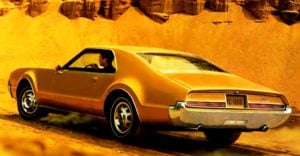
One might be forgiven for mistaking an early Toronado for a second-generation Buick Riviera when taking a glance at the rear 3/4. The two vehicles shared General Motors’ E-body platform.
Then in 1962, Oldsmobile stylist David North penned a new design painting that he called the “Flame Red Car,” a concept for a compact sports car that was never intended to go beyond the literal drawing board.
To North’s surprise, a few weeks after creating the Flame Red Car painting the Oldsmobile division was notified by GM brass that they’d green-lit the production of a Buick Riviera/Ford Thunderbird-class personal luxury sports coupe that would utilize North’s painting as its stylistic template.
Moving to a larger platform mitigated some of the risk involved, as it would place it among more costly competitors and provide more under-hood real estate for General Motors’ new Unitized Power Package (UPP), which was designed to allow for both the motor and gearbox to be installed into an engine bay no larger than a conventional rear-wheel drive car.
In development for seven years, GM engineers racked up 1.5 million test miles with the new drivetrain before they considered it ready for prime time.
General Motors touted the front-drive design as more sure-footed in bad weather while providing a smooth ride that didn't sacrifice the Toronado's "front-wheel tracking superiority."
Debuted in 1966, the Toronado featured a high-output version of Oldsmobile’s 425 cubic-inch Super Rocket V8 with a unique low-profile intake manifold for hood clearance and spherical exhaust-manifold flange gaskets, which were said to improve exhaust flow and reduce the likelihood of leaks.
Rated at 385 horsepower and 475 pound-feet of torque, that big-block was hooked to a special heavy-duty version of the Turbo-Hydramatic 400 three-speed automatic gearbox that was dubbed the TH425 for its use in this front-drive platform.
The Toronado would also be General Motors’ first vehicle to utilize a subframe, which cradled the Toronado’s powertrain and torsion-bar front suspension, providing greater isolation from road and engine harshness in the process.
Firestone designed a unique 8.85-inch by 15-inch tire specifically for the Toronado. Named the TFD (Toronado Front Drive), the tire featured stiffer sidewalls than typical tires, along with a distinctive white accent stripe.
The Toronado came right out of the gate with both big-block V8 power as standard as well as luxury interior appointments, essentially making it a purpose-built grand tourer. Images: Barrett-Jackson, GM
Though it weighed in at nearly 5,000 pounds upon its debut, the Toronado’s performance proved admirable, hitting 60 mph from a standstill in 7.5 seconds on its way to a 16.4-second quarter mile time. The car was also well received by automotive media and was awarded Motor Trend’s coveted Car of the Year award in 1966.
Although the Toronado’s design was initially more focused on luxurious grand touring than high performance, the story would change in 1968 with the introduction of the Toronado GT and its W-34 performance package.
RPO W-34
In 1967, Cadillac introduced their own version of the UPP design with their new sixth-generation Eldorado. Aimed directly at luxury buyers from the outset, the Cadillac would find an audience that was more receptive to the unconventional drivetrain layout, resulting in Oldsmobile’s Toronado production being cut almost in half from the near-41,000 examples built the previous year.
Clearly the Toronado would need to differentiate itself further from the Cadillac it shared some of its engineering with, and in the late 1960s, high performance seemed to be the answer to just about every issue in the realm of passenger cars.
Once Cadillac debuted their own version of the Toronado's front-drive system in the '67 Eldorado, Oldsmobile saw a sharp decline in Toronado sales. To combat this, they injected more of a high-performance attitude into the car, both through styling updates as well as the new W-34 options package seen here, which included a 455ci Olds big-block that dished out 400 horsepower and 500 lb-ft of torque.
This resulted in the debut of the W-34 performance option for the 1968 model year. The centerpiece of the package was a 455ci V8 that offered 400 horsepower and 500 lb-ft of torque by way of larger intake valves, a special performance camshaft, and a unique cold air induction system.
The TH425 gearbox was recalibrated for quicker shifts and received a higher stall speed torque converter for more urgent acceleration as well. This resulted in quarter-mile ETs for W-34-equipped Toronados dropping well into the 15-second range – not bad for a two and a half ton, front-wheel drive vehicle.
While just 124 Toronados were built with the W-34 package in 1968, production ramped up in the subsequent years. Nearly 8,200 W-34-equipped Toronados rolled out of factory between 1969 and 1970, the latter being its last year of availability.
Evolution and Legacy

Oldsmobile got rid of the hideaway headlight design when they updated the Toronado for the 1970 model year. Image: MJ Classic Cars
The Toronado saw stylistic revisions throughout the rest of its first-generation run year-over-year, with the 1970 model ditching the hideaway headlight design that debuted on the 1966 model for a more conventional front end layout and GT badging would adorn the W-34 optioned cars that year for the first and only time.
While the W-34 optioned Toronado was an impressive vehicle both in terms of its capability and its innovative drivetrain, its appeal to gearheads was overshadowed by drivers who were looking for a big, luxurious cruiser. The suspension tuning – which had gotten progressively softer over the years – would prove to be a harbinger of things to come.
When the second-generation model debuted in 1971, it was clear that the car had abandoned any aspirations it had of being a unique performance machine in favor of a more traditional luxury car design, both aesthetically and mechanically.
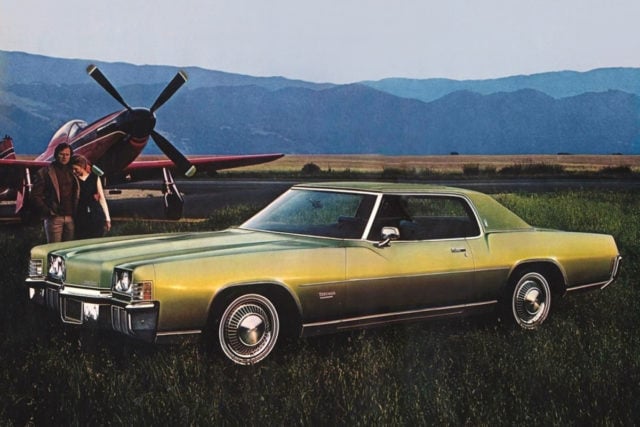
When the second-generation Toronado debuted in 1971, it was clear that Oldsmobile was moving away from the previous emphasis on performance toward more of an all-out personal luxury vehicle.
Power was down while size and weight went up, as was typical of the trends in the industry at the time, while the styling took on a much more familiar shape that was closer in line with its corporate cousin, the Cadillac Eldorado.
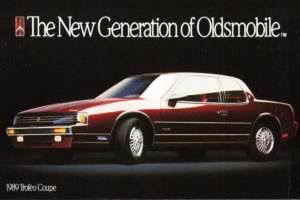 This approach would continue on with the debut of the downsized third-generation model in 1979, as well as the fourth-generation Toronado’s debut in 1986, the latter of which saw the E-body platform shrink once again and adopt a unibody construction, along with V6 power.
This approach would continue on with the debut of the downsized third-generation model in 1979, as well as the fourth-generation Toronado’s debut in 1986, the latter of which saw the E-body platform shrink once again and adopt a unibody construction, along with V6 power.
A glimmer of hope for enthusiasts would return with the introduction of the Troféo package, which equipped the fourth-generation Toronado with sportier suspension tuning, leather sport seats, dual-exit exhaust, and more aggressive styling.
However, it would not prove to be enough to change the course of sagging sales numbers, and Oldsmobile would ultimately kill off the Toronado after 1992, ending a production run that spanned more than two and a half decades.
Today, clean first-generation examples can still be found for a reasonable sum, though cars like this 1,000 horsepower, twin-turbocharged restomod built by Jay Leno are bringing more visibility to this unique chapter in GM performance history, so they might not stay that way forever.



